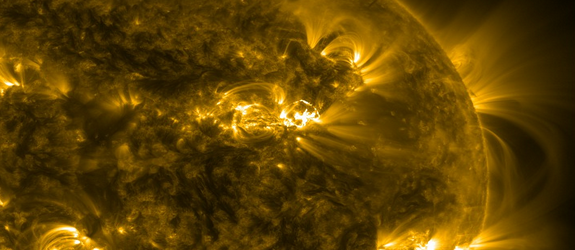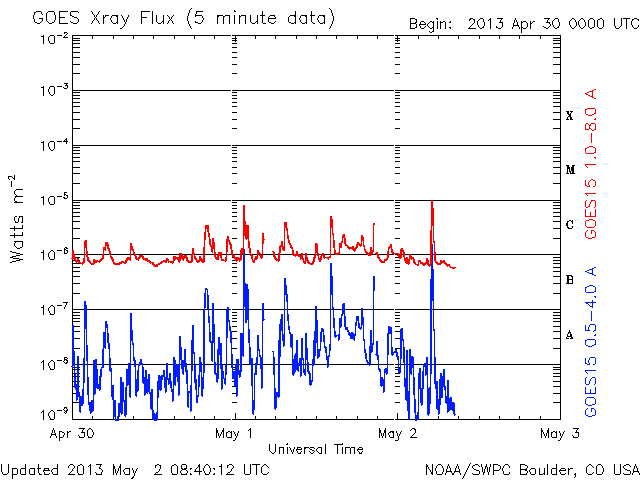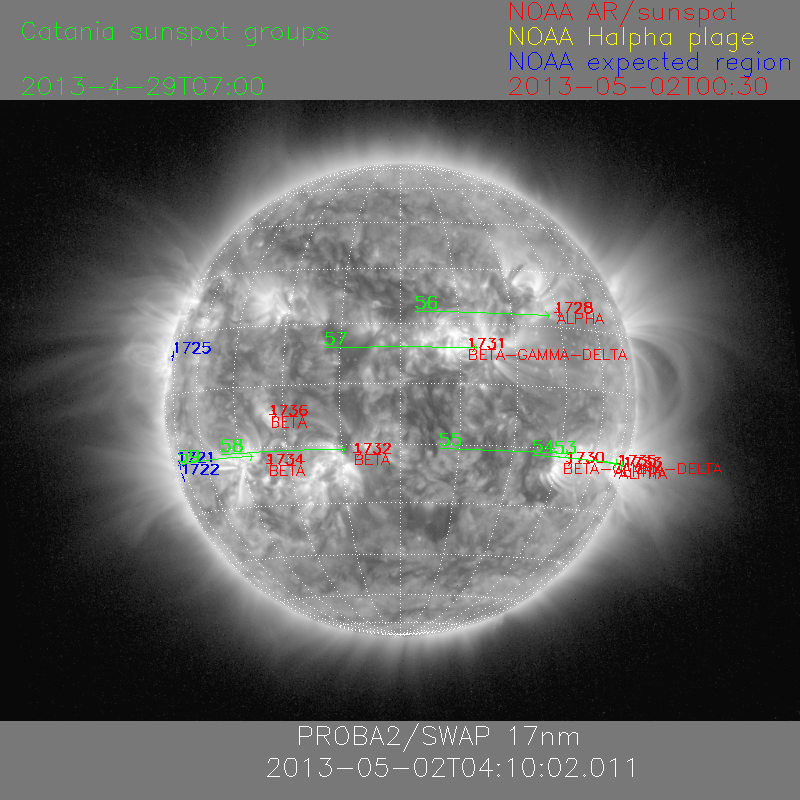Moderate solar flare measuring M1.1 erupted from Region 1731

A moderate solar flare reaching M1.1 erupted from Region 1731 on May 2, 2013. The event peaked at 05:10 UTC. Region 1731 is located near the center of the disk and has Beta-Gamma-Delta magnetic configuration capable of producing strong eruptions.
A Type II radio emission, with an estimated velocity of 703 km/s, was associated with the event. Type II emissions typically indicate a Coronal Mass Ejection (CME) is associated with a flare event. Additionally, a 10cm radio burst was reported, this can be indicative of significant radio noise in association with a solar flare. This noise is generally short-lived but can cause interference for sensitive receivers including radar, GPS, and satellite communications.
Latest imagery shows a strong CME leaving the Sun shortly after the eruption. An impact on Earth’s magnetic field is expected sometime on May 5, 2013.
NOAA SWPC forecasters estimated 45% chance for an M-class solar flare, and 5% chance for X-class.

Space Weather Message Code: ALTTP2
Serial Number: 848
Issue Time: 2013 May 02 0551 UTC
ALERT: Type II Radio Emission
Begin Time: 2013 May 02 0506 UTC
Estimated Velocity: 703 km/s
Description: Type II emissions occur in association with eruptions on the sun and typically indicate a coronal mass ejection is associated with a flare event.
***
Space Weather Message Code: SUM10R
Serial Number: 575
Issue Time: 2013 May 02 0521 UTC
SUMMARY: 10cm Radio Burst
Begin Time: 2013 May 02 0502 UTC
Maximum Time: 2013 May 02 0505 UTC
End Time: 2013 May 02 0505 UTC
Duration: 3 minutes
Peak Flux: 240 sfu
Latest Penticton Noon Flux: 159 sfu
Description: A 10cm radio burst indicates that the electromagnetic burst associated with a solar flare at the 10cm wavelength was double or greater than the initial 10cm radio background. This can be indicative of significant radio noise in association with a solar flare. This noise is generally short-lived but can cause interference for sensitive receivers including radar, GPS, and satellite communications.


Sunspots
There are currently 8 numbered sunspot regions on the disk. Region 1731, the source of M1.1 event today, has Beta-Gamma-Delta magnetic field and is located near the center of the disk. Any eruption from this region would be Earth directed. Same classification has Region 1730 located on the western limb of the Sun. Regions 1732, 1734 and 1736 are currently associated with Beta magnetic field and are about to rotate directly toward Earth.


Featured image SDO AIA 171, May 2, 2013 at 5:04 UTC. Courtesy of NASA/SDO and the AIA, EVE, and HMI science teams

Commenting rules and guidelines
We value the thoughts and opinions of our readers and welcome healthy discussions on our website. In order to maintain a respectful and positive community, we ask that all commenters follow these rules:
We reserve the right to remove any comments that violate these rules. By commenting on our website, you agree to abide by these guidelines. Thank you for helping to create a positive and welcoming environment for all.